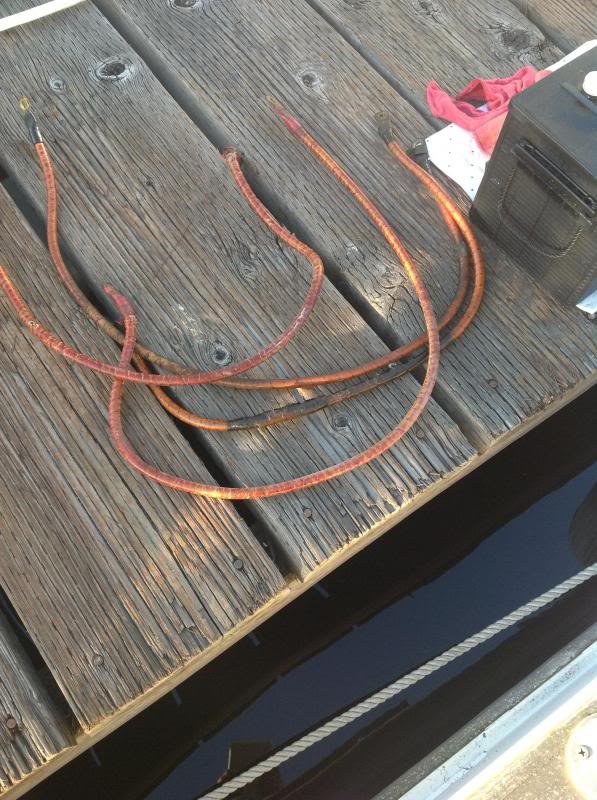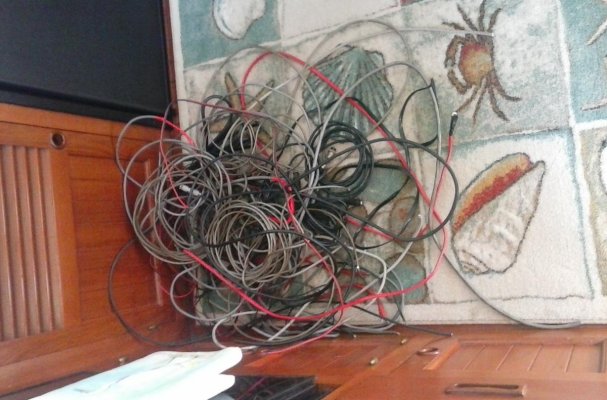cappy208
Guru
OK, so maybe I was exaggerating a little. (not by much)
The wiring on my little vessel has shown 34 years of additions, alterations and who knows what.
The battery switch is hooked up wrong, the main power supply switch (with the same: Off, 1, ALL, 2 selection) seems redundant. There seems to be no correlation between selection and power routing.
Using all your knowledge should I rip out all the wiring back to the switch harness and start fresh from the batteries?
Can anyone recommend a yacht related wiring primer to start with?
Thanks.
Being as the boat sits on a mooring and I need to feel secure leaving her for two weeks with a solar panel on the batteries, I would like to ensure the electrical system while I am away. Bilge pump good. No juice bad.
Any ideas?
The wiring on my little vessel has shown 34 years of additions, alterations and who knows what.
The battery switch is hooked up wrong, the main power supply switch (with the same: Off, 1, ALL, 2 selection) seems redundant. There seems to be no correlation between selection and power routing.
Using all your knowledge should I rip out all the wiring back to the switch harness and start fresh from the batteries?
Can anyone recommend a yacht related wiring primer to start with?
Thanks.
Being as the boat sits on a mooring and I need to feel secure leaving her for two weeks with a solar panel on the batteries, I would like to ensure the electrical system while I am away. Bilge pump good. No juice bad.
Any ideas?


